
About Snakes Friends of Snakes Society
0:16 Introduction A snake is a reptile with a long, slender body but no arms or legs. Snakes are closely related to lizards. There are about 2,900 species, or kinds, of snake. The best-known snakes include cobras, vipers, boas, and pythons. Where Snakes Live Snakes are found throughout the world except near the North and South poles.
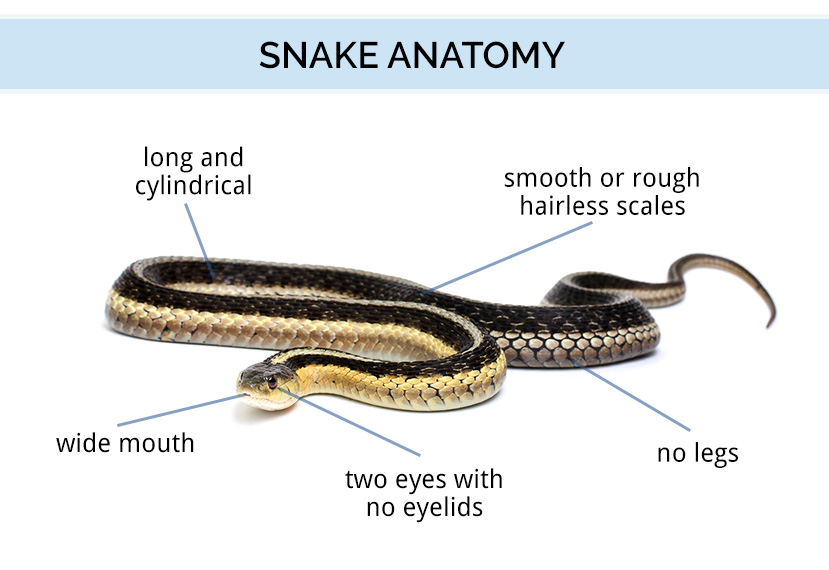
Snake Identification, Anatomy, & Life Cycle Types of Snakes
Just about everyone knows what a Snake is. These creatures have long bodies, no legs, and their skin has a covering of scales. Most species also have extremely flexible jaws, or even possess extra joints, so that they can swallow prey larger than themselves! Researchers recognize about 3,600 different species of Snakes.
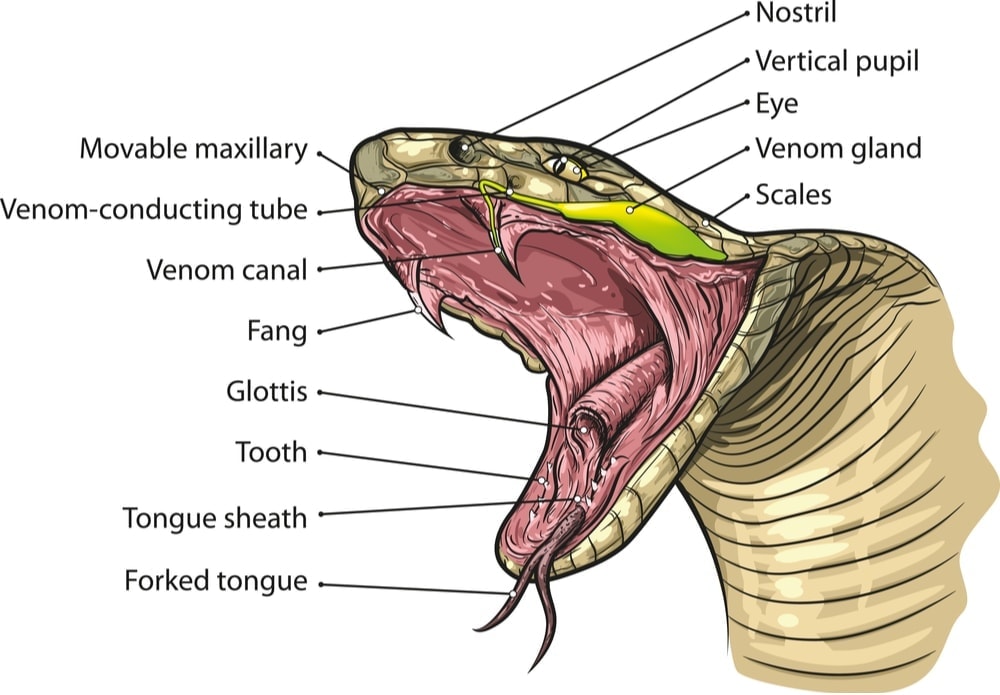
Snake Anatomy Information » Petsoid
The acting skills of this snake might help her escape certain death. 28 July 2022. Snakes; Animal Behaviour; Predators; More. Science. This man gets bitten by deadly snakes in the name of science. Medicine; Snakes; More. Animals. How predators get past the trickiest of defences. Snakes; Animal Behaviour; Dolphins; Predators; Wildlife;

Parts of a Snake Nomenclature Book Montessori Zoology Etsy
Category: Animals & Nature Also called: serpent rattlesnake cobra blind snake worm snake venomous snake See all related content → Recent News Jan. 5, 2024, 4:26 AM ET (Yahoo News) Aussies stunned as snake found inside belly of coral trout: 'So cool' Dec. 30, 2023, 11:39 AM ET (AP)

Snake Vocabulary Part Of Body Vector Stock Vector Image 46619340
Snake's head comprises of the eyes, nose, mouth, brain, and a special sensory organ known as the vomeronasal or Jacobson's organ. Its two apertures are located just in front of the choana, an open slit-like structure on the top interior of the reptile's mouth. Every snake has a forked tongue.

Snake anatomy and physiology pet education, The anatomy and physiology of snakes differs from
yellow anaconda Yellow anaconda (Eunectes notaeus). green mamba East African green mamba (Dendroaspis angusticeps). The most characteristic aspect of the snake form is the elongate body and tail and the absence of limbs.
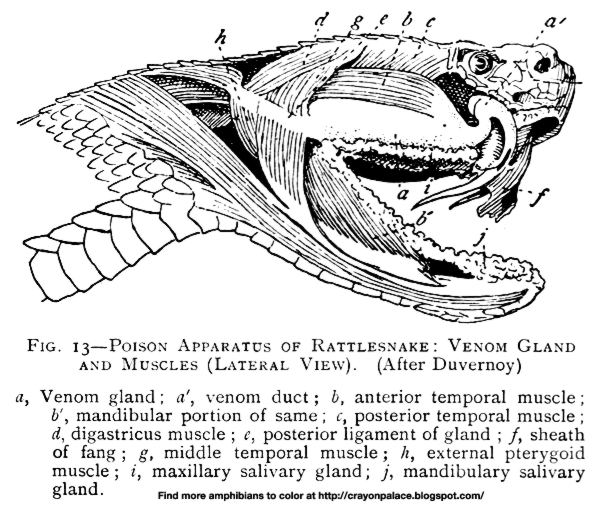
Identify and color the parts of a rattlesnake Crayon Palace
A fun way to learn the parts of the body of a snake - with the whole family. If you've used our snake anatomy poster, you'll know all about the body parts of a snake. Now you can prove your knowledge with this fun labelling activity!

98 best drawing snake study images on Pinterest Snakes, Amphibians and Reptiles
Introduction Snakes are members of the class Reptilia, order Squamata, and suborder Serpentes. There are over 3,500 species of snakes in the world, however, for the most part, the anatomy of the snake is consistent across species.

Premium Vector Diagram showing body part of snake
Snake - Skull, Sense Organs: Snakes rely on several senses to inform them of their surroundings. The pits are sensitive to changes in temperature. The lidless eyes are covered by a transparent cap of epidermis. Sound reception is entirely by bone conduction within the skull. The skull is characterized by mobility, with hinge joints at several levels. Kidney wastes are excreted in a solid state.
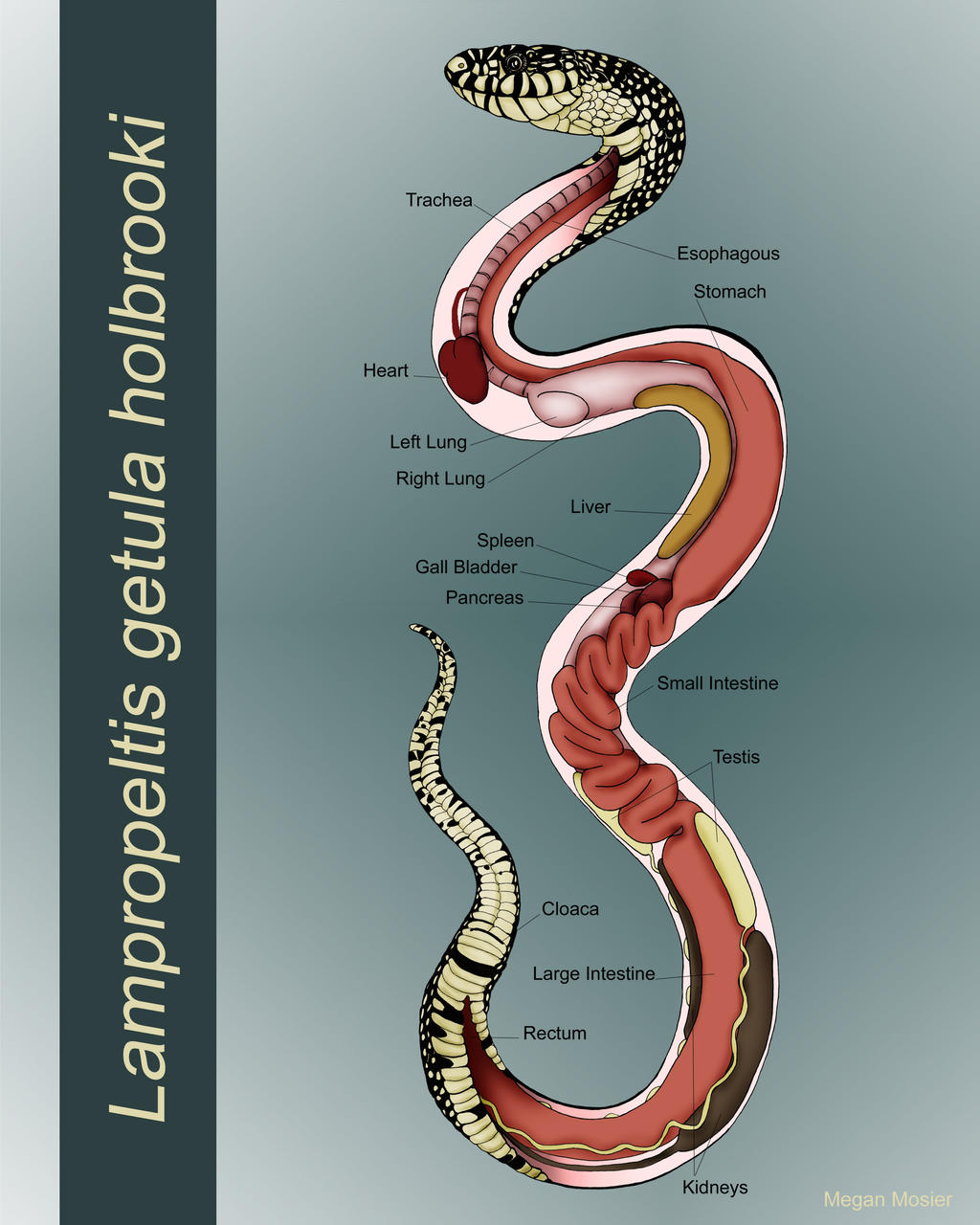
Anatomy of a Snake by MeganMosier on DeviantArt
As diverse as they are, all snakes share a common body plan, with a long, legless trunk and a short tail (you can tell trunk from tail by the skeleton: the trunk is the part with the ribs). They also share a common lifestyle - every snake, everywhere on earth, is a predator.

Anatomy of snake
snake, Any member of about 19 reptile families (suborder Serpentes, order Squamata) that has no limbs, voice, external ears, or eyelids, only one functional lung, and a long, slender body. About 2,900 snake species are known to exist, most living in the tropics. Their skin is covered with scales.
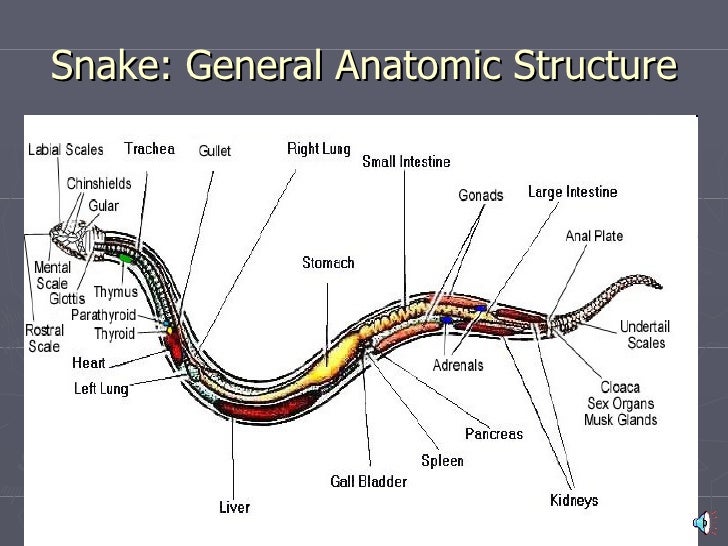
Snakes Anatomy Anatomy Drawing Diagram
About snakes Snakes are fascinating creatures with unique anatomy. They have long, slender bodies with no legs, arms, or external ears. Instead of ears, they have a small opening on the side of their head that picks up vibrations. Snakes also have flexible jaws that allow them to swallow prey up to three times the size of their head.
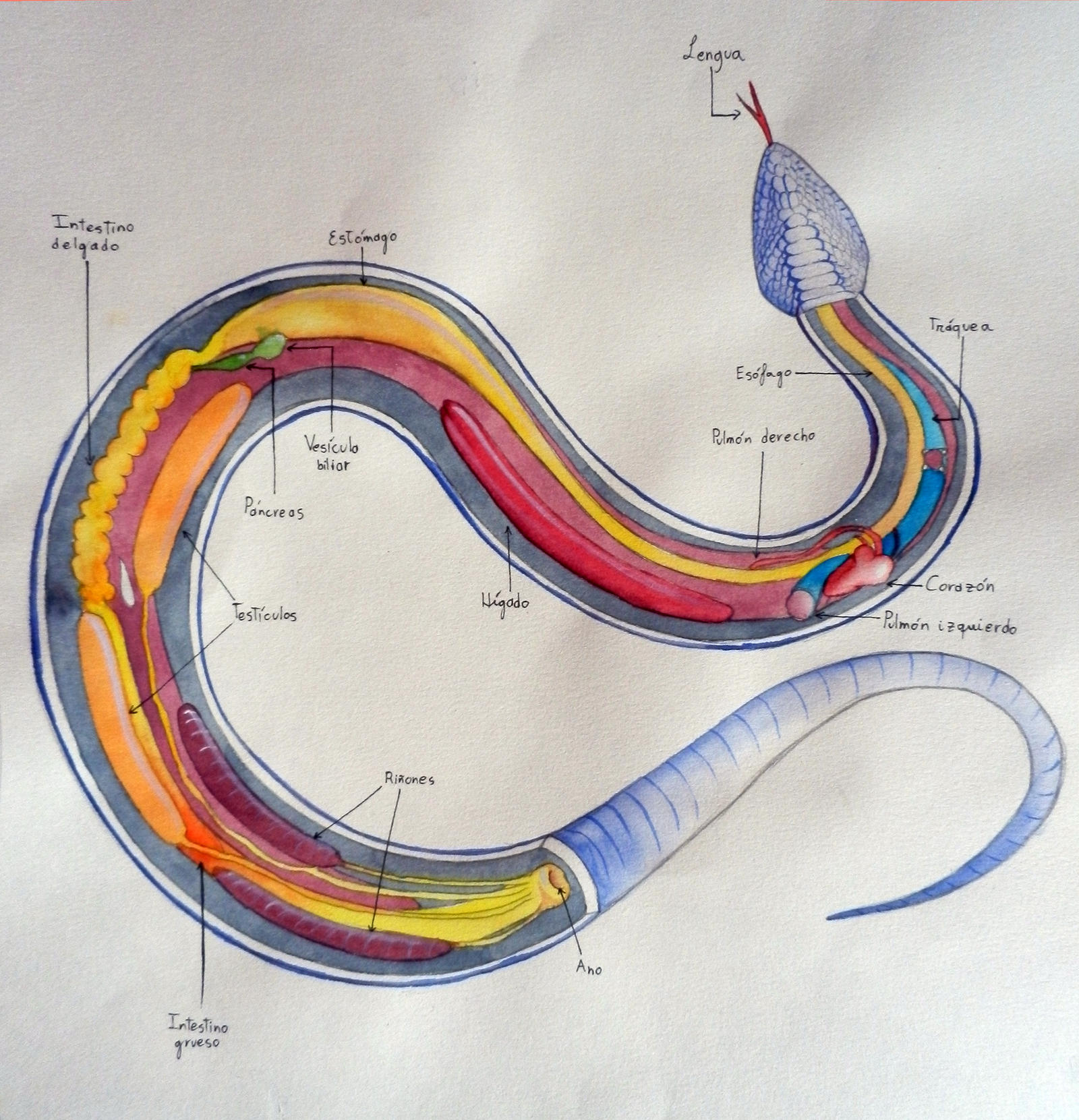
Snake organs (Anatomy study) by Erobertix on DeviantArt
Experience the world of snakes in a whole new way with my fascinating 3D animation about the anatomy of these fascinating animals. Learn about the anatomy of.
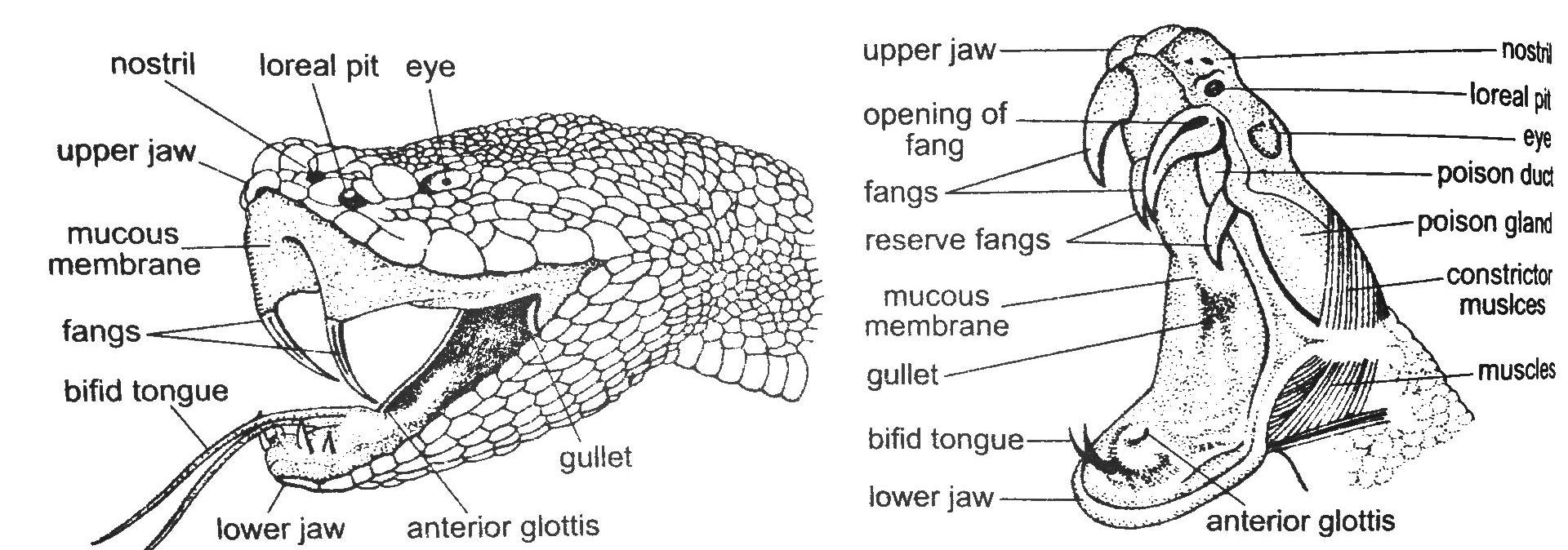
How Do Snakes Bite? (Biting Mechanism of Snakes)
Habits. About once a month snakes shed their skin, a process called ecdysis that makes room for growth and gets rid of parasites. They rub against a tree branch or other object, then slither out.

All about snakes Wildlife
A snake's body is made up of many parts. Each part has a specific function, or job.
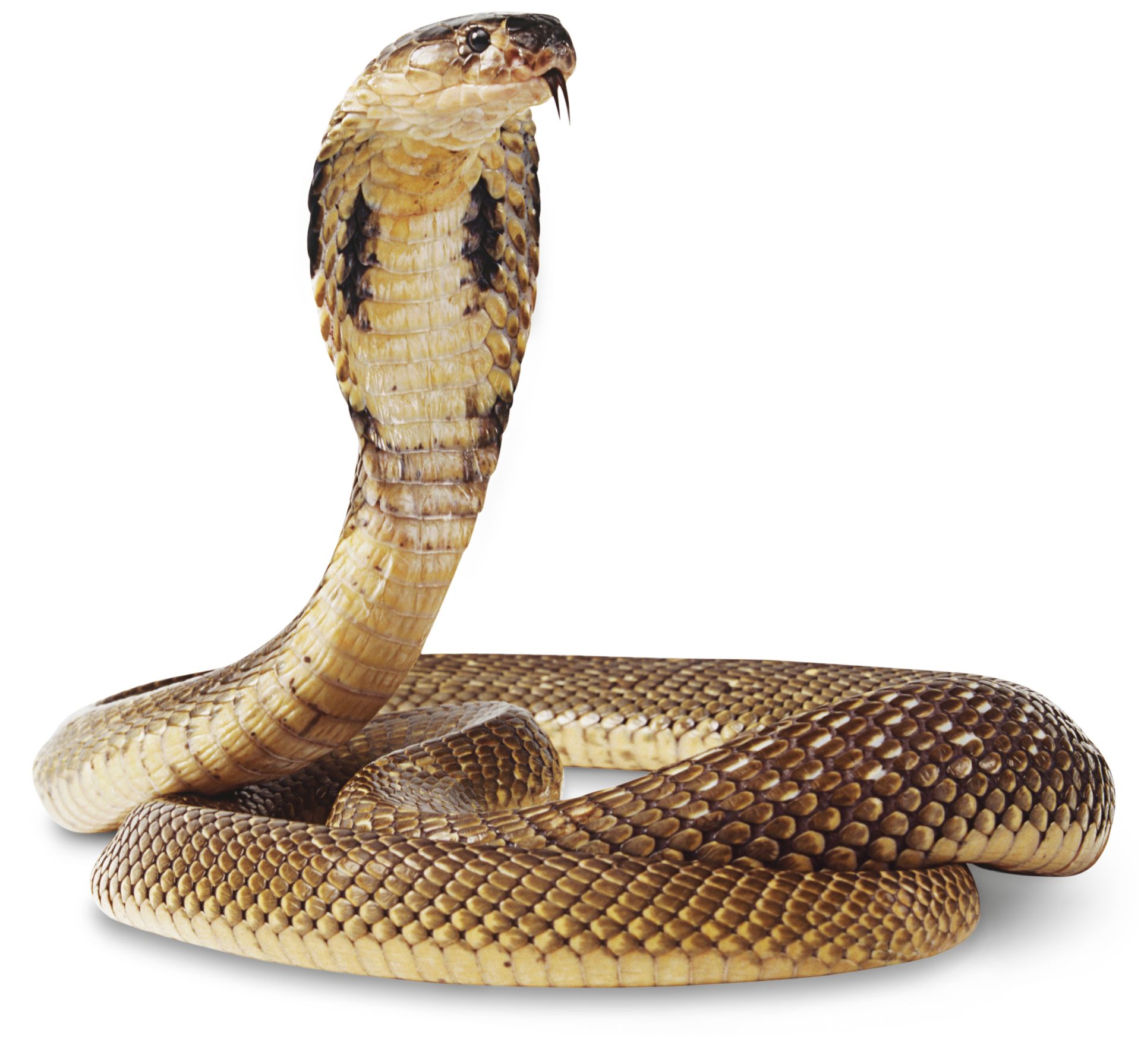
Cobra Snake Facts Cobra Snake Information DK Find Out
Snakes have no moveable eyelids, limbs, ear openings, sternums, or urinary bladders. Most species have only one functioning lung, although many have a second, vestigial (essentially non-functioning, or only marginally functional) lung. The organs in the snake body are necessarily elongated, to fit within the narrow confines of its body cavity. Lizards differ from snakes anatomically by having.